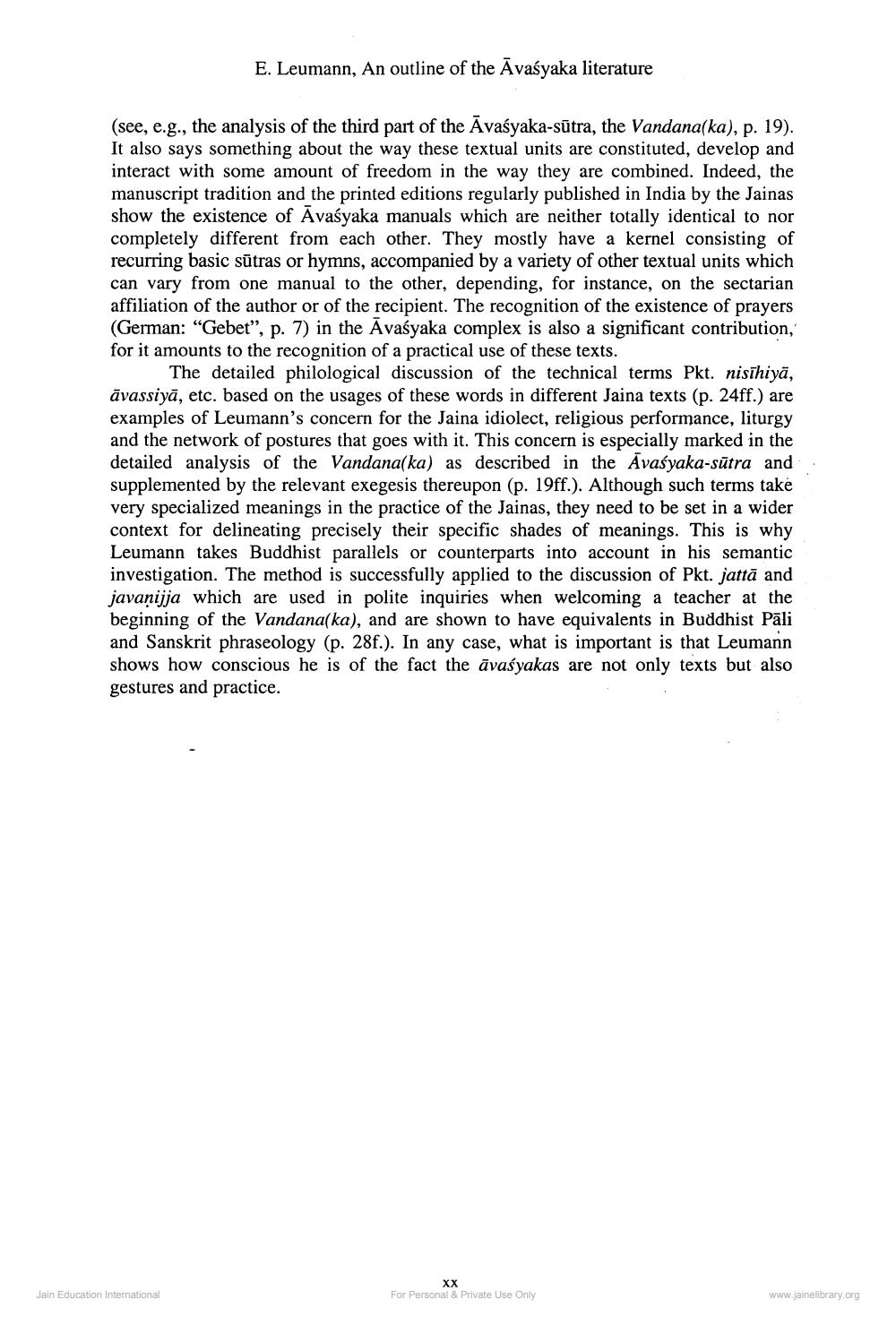________________
E. Leumann, An outline of the Āvaśyaka literature
(see, e.g., the analysis of the third part of the Avaśyaka-sūtra, the Vandana(ka), p. 19). It also says something about the way these textual units are constituted, develop and interact with some amount of freedom in the way they are combined. Indeed, the manuscript tradition and the printed editions regularly published in India by the Jainas show the existence of Āvaśyaka manuals which are neither totally identical to nor completely different from each other. They mostly have a kernel consisting of recurring basic sūtras or hymns, accompanied by a variety of other textual units which can vary from one manual to the other, depending, for instance, on the sectarian affiliation of the author or of the recipient. The recognition of the existence of prayers (German: "Gebet", p. 7) in the Avasyaka complex is also a significant contribution, for it amounts to the recognition of a practical use of these texts.
The detailed philological discussion of the technical terms Pkt. nisīhiyā, āvassiyā, etc. based on the usages of these words in different Jaina texts (p. 24ff.) are examples of Leumann's concern for the Jaina idiolect, religious performance, liturgy and the network of postures that goes with it. This concern is especially marked in the detailed analysis of the Vandana(ka) as described in the Avasyaka-sūtra and supplemented by the relevant exegesis thereupon (p. 19ff.). Although such terms take very specialized meanings in the practice of the Jainas, they need to be set in a wider context for delineating precisely their specific shades of meanings. This is why Leumann takes Buddhist parallels or counterparts into account in his semantic investigation. The method is successfully applied to the discussion of Pkt. jattā and javanijja which are used in polite inquiries when welcoming a teacher at the beginning of the Vandana(ka), and are shown to have equivalents in Buddhist Pāli and Sanskrit phraseology (p. 28f.). In any case, what is important is that Leumann shows how conscious he is of the fact the āvasyakas are not only texts but also gestures and practice.
Jain Education International
For Personal & Private Use Only
www.jainelibrary.org




